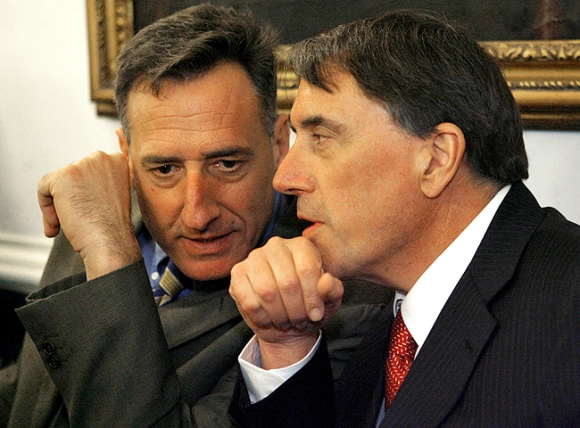Gov. Shumlin’s decision not to proceed with a financing plan is disappointing to the many single payer advocates but should not have been a surprise. And, much more importantly, it should not end the effort to achieve universal coverage in Vermont.
In reality, Vermont could never have a single payer health care system. There were always going to be other payers: Medicare, federal employees, the military, participants in self-insured multistate (ERISA) employer plans, out-of-staters, and people who simply preferred to keep their existing health coverage even as they paid the single payer taxes. Under these circumstances, the per capita savings from a Vermont single payer plan would be less than a national plan, were such a thing ever politically feasible.
Most Vermonters have health care that they like and can afford, in part because someone else — an employer or government — pays most of the cost. Shumlin’s now defunct plan would have taxed the contented majority to address the problem of the uninsured and inadequately insured. By placing so much emphasis on the income tax (or mandatory premiums), the plan would have transferred some of the burden of health care from Vermont’s largest and wealthiest corporations (who provide health care to their employees) to their workers and to small business.
Even if Vermont won’t create single payer health care for everyone, we can still provide quality health care for those who are uninsured or underinsured. Last May, I proposed legislation to create a public option as part of the exchange created by the Affordable Care Act. The public option would establish a benchmark silver plan on the exchange (perhaps using the existing Blue Cross Blue Shield silver plan). Silver plans are the only ones eligible for federal subsidies that help pay premiums, but they only have a 70 percent actuarial value, meaning the plan only picks up 70 percent of the participant’s health care costs. Under my proposal the state would enhance the benchmark plan so that it paid 87 percent of the participant’s costs and would subsidize each participant’s monthly premiums. I proposed a monthly subsidy of $40 a month for an individual and $120 a month for a family.
Under my proposal the state would enhance the benchmark plan so that it paid 87 percent of the participant’s costs and would subsidize each participant’s monthly premiums. I proposed a monthly subsidy of $40 a month for an individual and $120 a month for a family.
Presumably every participant in the exchange would choose the public option since he/she would be getting 87 percent of her/his health care expenses covered for the price of a 70 percent plan and, in addition, would have a subsidy. Since almost everyone would choose the enhanced and subsidized plan, Vermont would end up with many of the same administrative savings that would have occurred under the single payer plan.
Legislative counsel estimated the cost of my proposal at $350 million. I proposed paying for it with a 2.2 percent payroll tax and by eliminating certain income tax deductions that primarily benefit high income Vermonters and which otherwise have no real policy purpose. Since every Vermonter would pay the tax, every Vermonter would receive the subsidy and enhancements, regardless of income. But, no one who is happy with his current health care would be forced into the new system. And, as a practical matter, most well off Vermonters have good insurance paid by their employers and would not be entering the subsidized pool.
Under this proposal, Vermont would not be taking over the state’s health care system but instead building on the existing Affordable Care Act. If the projections on needed revenue are wrong, the state is not locked into tax increases (as it would be under single payer) but can simply adjust the subsidies or benefits. And the public option can be created right now. It does not depend on an uncertain federal waiver.
The cost figures the governor released last week are not substantially different from those contained in a report he submitted to the Legislature in January 2013. In short, the handwriting about the likely fate of the single payer plan has been on the wall for quite some time. Instead of recriminations over what didn’t happen, let’s look to what can still be accomplished.
